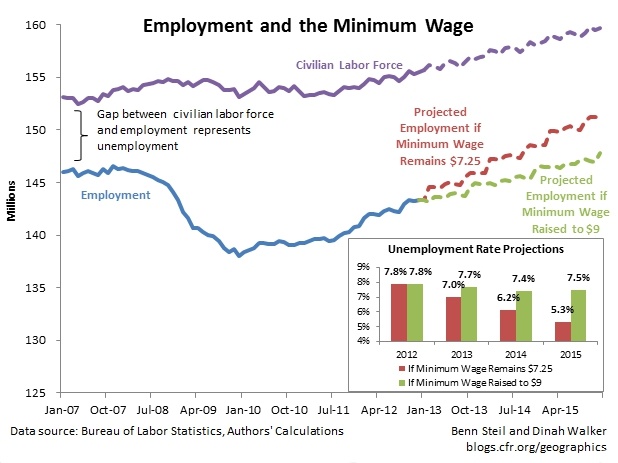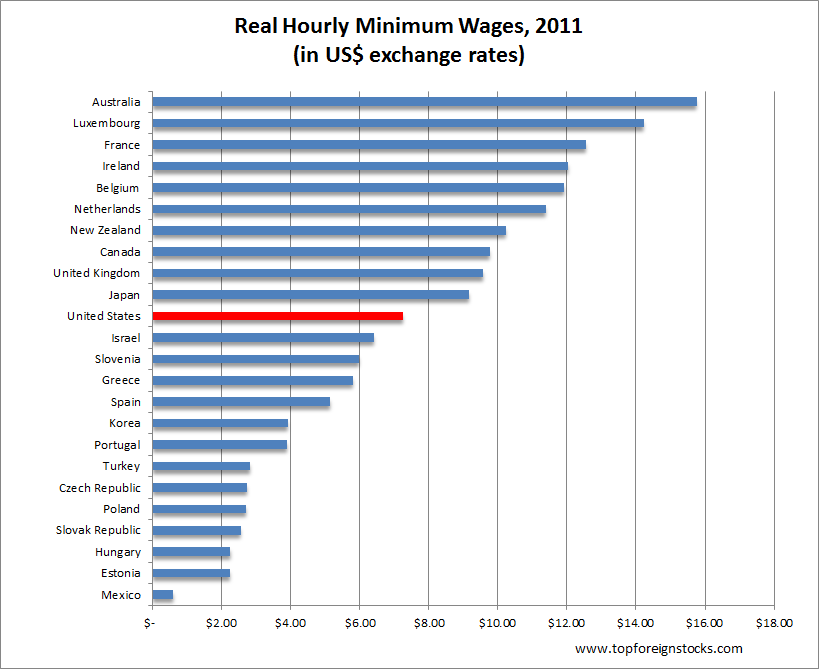In his State of the Union address last month, President Obama proposed raising the Federal minimum wage from the current $7.25 to $9.00 per hour. 19 States already have minimum wages of over $7.25/hr and the state of Washington has a minimum wage of over $9.00/hr.
As expected this topic is being hotly debated by economists and media pundits. From a report analyzing the impact of a higher minimum wage in Council of Foreign Relations:
Click to enlarge
An important question which follows is what impact this would have on employment. A recent paper by Texas A&M economists Jonathan Meer and Jeremy West found that whereas the immediate impact on unemployment of raising the minimum wage by 10% is very small, its impact on long-term job growth is more substantial: 0.35 percentage points. The logic is that raising the minimum wage is a greater deterrent to hiring than it is a motivator for firing.
Using their findings, the 19% rise in the effective minimum wage proposed by President Obama would decrease long-run job growth by 0.7 percentage points. Put in perspective, this is significant. Over the past twelve months, average year-over-year job growth has been 1.8%. Knocking off 0.7 percentage points would reduce it to 1.1%, which is barely more than the 0.9% average year-over-year growth in the labor force over the past twelve months. As today’s Geo-Graphic shows, this could materially slow the fall in unemployment from its current high level.
Source: Obama’s Minimum-Wage Hike Will Hit Employment, CFR
But how does U.S. minimum wage compare to other OECD countries?
The U.S. wage rate is actually lower than many other developed countries. The U.S. ranks in the middle among the OECD countries.
I disagree with the results of the study Texas A&M economists. Contrary to their conclusions I would state that higher minimum wages should help the economy in the long-run. Putting more money into workers’ pocket should help stimulate demand which the U.S. economy desperately needs now. This is especially important in the current situation where workers’ real wages have remained stagnant or even went lower when corporate profits are at record highs. For example, Australia has had one of the highest hourly wages for years among developed countries . In 2011, it had the highest hourly rate at close to $14.00 among the OECD countries. Despite the high wage rate, Australia has a vibrant growing economy and the economy remained strong even during the global financial crisis. So the theory that higher minimum wage would adversely affect employment rates is incorrect.
The following chart shows the latest real hourly minimum wages for OECD member countries:
Click to enlarge
Source: OECD





